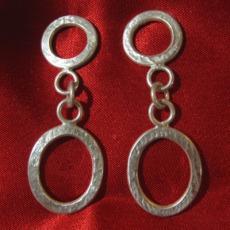Images across the web are used to grab and hold attention of website visitors. In addition to this they cane be really quite useful for search optimisation purposes, not just once visitors get to your site. But one thing that images must be is contextually relevant, this ensures they are good for catching potential and current visitor attention and helping search rankings.
So how do you optimise images for SEO? well, here are are my top 5 tips
1. Keep them Contextual and Relevant
When choosing an image or photo for your website or blog you should ensure that those images are relevant and support the text which you have written. This does not mean that you need to be always on topic, but relevant even if in an abstract way. A good example of this is here on SEOAndy where my blog posts usually are illustrative of the blog post and it's sentiment rather than closely related to the content. These images are still very useful for SEO.
Don't forget the old saying is true, " a picture is worth a thousand words".
2. Choosing the Optimal Size and Settings

Optimising Image Settings is the second bit of this tip. Now in general you wont need to bother with this unless you've created a high quality image yourself or have taken a hi-res photograph. For example, on Rhona Petrie's website she has lots of photos of her handcrafted jewellery (an example to the right), but the photos are taken at 300DPI and the output is set to the highest setting which means the filesize can be huge at times. To overcome this photographers should use something like Adobe Photoshop to manipulate images and export them in the correct settings, but if you have a photo you want to check the settings of, again use the above online editors.
3. File Names Are Important
When optimising images for SEO one of the first things to think about is how you would describe your image and how that can fit in with your SEO efforts already in existence. For example the photo above is called Textured-wire-earrings.jpg this is an optimised file name because it describes the image and includes the keyword earrings which Rhona's website is targeting. Lets take a look at the image at the top of this post, its of a man taking a photo it's file name is how-a-photographer-can-optimise-for-seo.jpg it's optimised for the post talking about image optimisation but it also targets the audience of photographers.
4. Optimise Alt Text
Alt, Alternative, text is the section of text which goes along with an image such that you can describe the image in use. This in general is used by search engines to classify your image, but is actually for accessibility reasons. For instance if a user visits the site in a text-only audio browser (maybe they are blind) then images will be rendered as this Alt text and as such this means you must describe all images as well as possible. Another reason for wanting to do this really well is that it can, in some cases, effect search ranking. It is another place you can optimise for your keywords, though as always don't get too spammy.
5. Show Your Fun Side
All of the above is fine and well but you must go further. You must show you willingness to have fun, especially if you run a blog like this. As mentioned above my images aren't always on topic but they are in a round about way, photos are "thought zones" and as such you can use them to engage your visitors. For example in a recent post I talked about common mistakes to make in seo the photo was of a young girl licking a post in the snow... and anyone with any common sense will know why that is a mistake. But at the same time it's kind of fun to say this is a mistake, its not an seo mistake but it can be funny. So show your fun side, take your contextual self beyond the realms of the "normal" ideas you may have. Have fun, and enjoy.
top photo from blogging.com.

